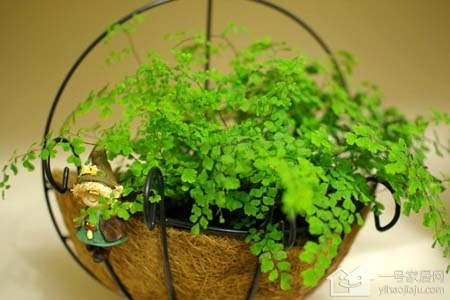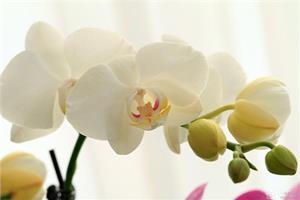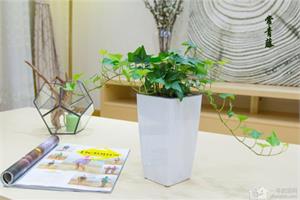What is the function of Dryopteris Dryopteris? culture methods of Dryopteris
Dryopteris, with a height of 0.1 to 0.6 meters and a thin and long stem, is a wild plant with a certain ornamental value, so it is often used in garden culture, and now it has become one of the breeding plants chosen by many families. however, in the process of culture, many people end up failing because they are not clear about the culture methods of Dryopteris, so what are the culture methods of Dryopteris?

Introduction of Dryopteris przewalskii
Dryopteris Dryopteris is a perennial evergreen herb, which is called as iron grass, clematis, water pig hair soil and so on. Its light green thin leaves with jet-black and shiny petioles are particularly elegant and elegant, so they are also called "young girl's hair". In the wilderness, Dryopteris grows mostly on the wet rocks of the valley by the stream, likes warm, humid and semi-cold environment, is not cold-resistant, and avoids direct sunlight. Like loose, fertile and calcareous sandy loam.
Dryopteris Dryopteris is a perennial herb with a plant height of 15-40 cm. Its rhizome is slender and transverse, densely covered with brown lanceolate scales. Its leaves are distal or proximal; the stalk is usually 5-20 cm long, about 1 mm thick, slender, chestnut-black, with a glossy surface, its base is covered with the same scales as on the rhizome, and the leaf blade is ovate-triangular in length between 10-25 cm and 8-16 cm wide.
The soil used for cultivation in pots can be mixed with loam, rotten leaf soil and river sand. Pay attention to the application of liquid fertilizer once a week, and always keep the basin soil moist and proper air humidity. In the dry autumn and winter season, you can often sprinkle water on the ground around the plant in order to increase the humidity in the air.
The function of Dryopteris Dryopteris
Medicinal value: the whole grass of Dryopteris can be used as medicine, it can clear away heat and detoxification, and it can also be used for dysentery, and it can also be used for dysentery. It has good therapeutic effects on lung heat, cough, hepatitis, snakebite, fall injury and so on.
Ornamental value: Dryopteris like shade, strong environmental adaptability, cultivation is very easy, very suitable for indoor perennial pot culture, if it is a small potted plant, we put it on the desk, coffee table, and larger potted plants we use to decorate the aisle or living room. And the leaves of Dryopteris fern are also good materials for cutting leaves and dried flowers, together with flower vases, which have a good ornamental value to beautify the home environment.
III. Culture methods of Dryopteris Dryopteris
The main results are as follows: 1. Ramet reproduction: Dryopteris fern is mainly propagated by ramets, which can be propagated indoors in four seasons, but it is generally carried out in early spring. Take the mother plant out of the basin, cut off its rhizome, so that each piece has part of the rhizome and leaves, and then planted in a small basin. New plants can be obtained by covering the rhizome with mixed soil, irrigating and culturing in a damp environment.
2. Soil: Dryopteris prefers loose, permeable and fertile calcareous sandy loam, and the cultivated soil can be mixed with loam, rotten leaf soil and river sand.
3. Watering: the fern likes the humid environment and should be fully watered during the growing season. In addition to keeping the basin soil moist, we should also pay attention to the high air humidity and sprinkle water around the plant when the air is dry. Especially in summer, water should be irrigated twice a day. If there is a lack of water, it will cause the leaves to shrink. Watering taboo basin soil when dry and sometimes wet, easy to make the leaves yellow.
4. Illumination: Dryopteris likes to grow in a sunny environment, so it is best to put it in an environment with good ventilation and plenty of sunshine, but it should be noted that Dryopteris likes astigmatism and must not expose it to the sun. if exposed to strong light for a long time, it will cause the leaves of Dryopteris to turn yellow or even die.
5. Fertilization: Dryopteris is not particularly fond of fertilizer, so as long as it is guaranteed to apply some thin liquid fertilizer every two to three months, it should be noted that liquid fertilizer should not be spilled on the leaves in the process of fertilization, otherwise it will lead to the phenomenon of rotten leaves.
Finally, the above is a brief introduction to several breeding methods of Dryopteris. Dryopteris is a common household potted plant, which can not only effectively purify the indoor air but also beautify the indoor environment. In life, as long as you understand its growth habits, in fact, the breeding method is also very simple.
The above is the relevant introduction of this article, I believe you have a simple understanding of this after reading it, if necessary, you can continue to pay attention to the No. 1 home network for more information.
Related
- Wuhan Hospital Iron Tree Blooming Result Was Instantly Frightened by the Gardener Master
- Which variety of camellia is the most fragrant and best? Which one do you like best?
- What is the small blue coat, the breeding methods and matters needing attention of the succulent plant
- Dormancy time and maintenance management of succulent plants during dormancy
- Minas succulent how to raise, Minas succulent plant pictures
- What are the varieties of winter succulent plants
- How to raise succulent plants in twelve rolls? let's take a look at some experience of breeding twelve rolls.
- Attention should be paid to water control for succulent plants during dormant period (winter and summer)
- Watering experience of twelve rolls of succulent plants
- Techniques for fertilizing succulent plants. An article will let you know how to fertilize succulent plants.



